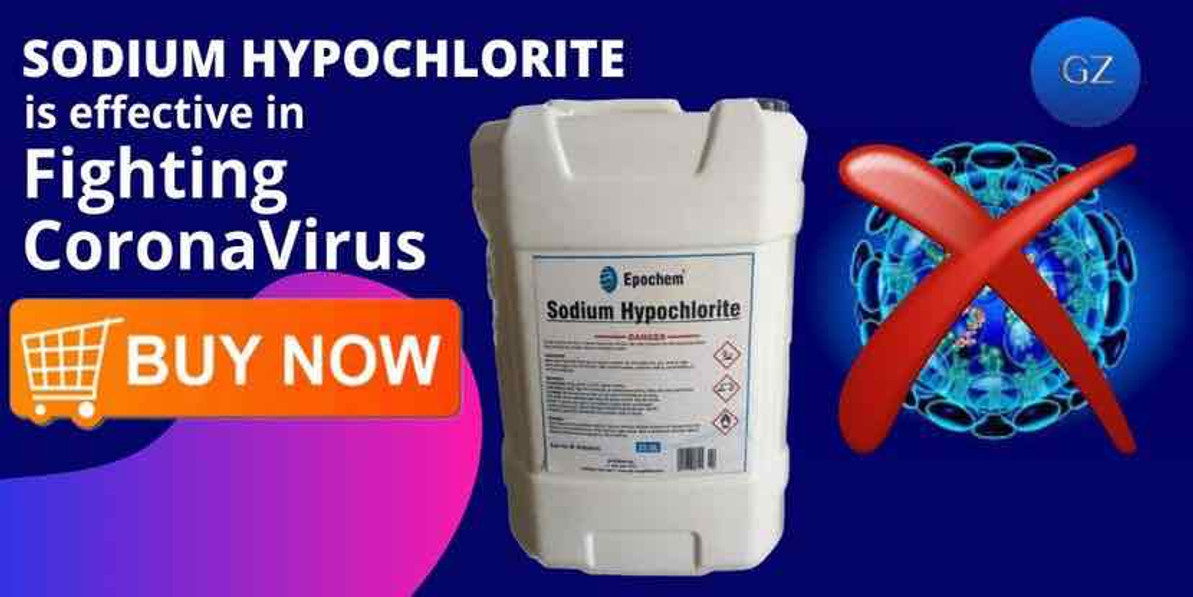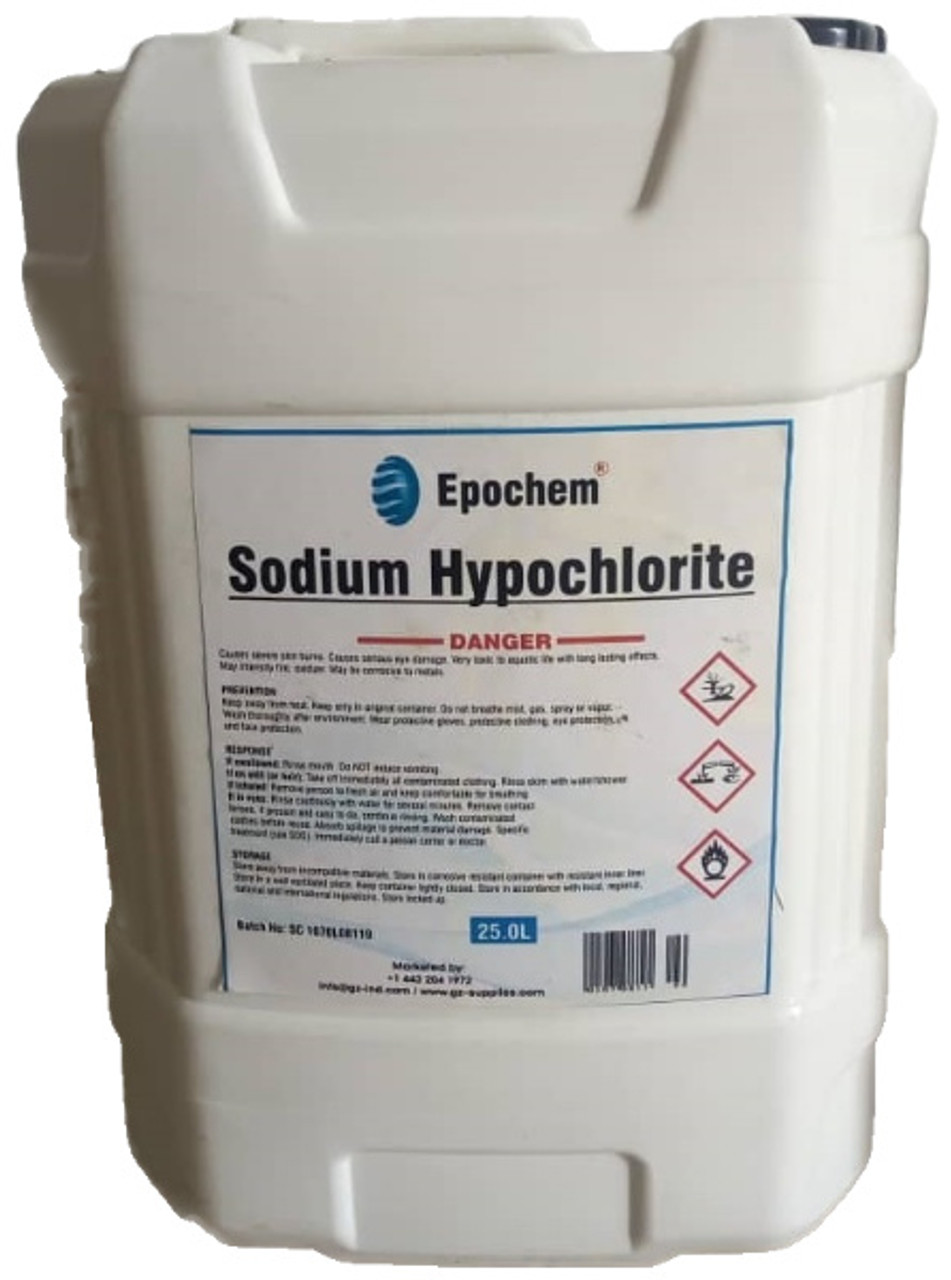SODIUM HYPOCHLORITE IS EFFECTIVE IN FIGHTING THE CORONA VIRUS
SODIUM HYPOCHLORITE IS EFFECTIVE IN FIGHTING THE CORONA VIRUS
The Word Health Organization WHO have advised and made it very loud that: You can protect yourself and help prevent spreading the virus to others if you:
1.Wash your hands regularly for 20 seconds, with soap and water or alcohol-based hand rub.
2.Cover your nose and mouth with a disposable tissue or flexed elbow when you cough or sneeze.
3.Avoid close contact (1 meter or 3 feet) with people who are unwell
4.Stay home and self-isolate from others in the household if you feel unwell.
5.Don't Touch your eyes, nose, or mouth if your hands are not clean.
In these trying times of Coronavirus pandemic, disinfectants are evidently important and yes Sodium hypochlorite is effective in fighting the coronavirus. It is one of the recommended chemicals to be used for disinfecting environment against the virus. It is important to be educated on the detailed disinfection guidance by the CDC
What are disinfectants?
Disinfectants are antimicrobial agents designed to inactivate or destroy microorganisms on inert surfaces. Disinfectants are different from other antimicrobial agents such as antibiotics, which destroy microorganisms within the body and antiseptics which destroy microorganisms on living tissue. Disinfectants are also different from biocides — the latter are intended to destroy all forms of life, not just microorganisms. Disinfectants work by destroying the cell wall of microbes or interfering with their metabolism.
Disinfectants kill more germs than sanitizers. Disinfectants are frequently used in hospitals, dental surgeries, kitchens, and bathrooms to kill infectious organisms.
Air disinfectants are typically chemical substances capable of disinfecting microorganisms suspended in the air. Disinfectants are generally assumed to be limited to use on surfaces, but that is not the case. In 1928, a study found that airborne microorganisms could be killed using mists of dilute bleach.
Epochem Sodium Hypochlorite
EPA approved List of Antimicrobial products against SARS-COV-2
Sodium hypochlorite, commonly known as bleach, is most frequently used as a disinfecting agent. On March 3, the EPA released a list of antimicrobial products for use against SARS-CoV-2, under an emerging viral pathogens program developed for just this kind of scenario.
Sodium Hypochlorite is a broad-spectrum disinfectant that is effective for the disinfection of viruses including corona virus, bacteria, fungi, and mycobacterium.
Sodium hypochlorite is a strong oxidizing agent that has a chemical formula of NaClO, with an ionic bond between the sodium (Na+) ion and a hypochlorite ion (ClO-). Sodium hypchlorite is produced from the reaction of chlorine (Cl2) with sodium hydroxide (NaOH). Studies show that disinfectant products containing at least 62–71% ethanol, 0.5% hydrogen peroxide or 0.1% sodium hypochlorite can remove a virus including corona virus within one minute.
In this period of corona virus (COVID-19) threat, diluted Epochem sodium Hypochlorite (bleach) solutions can be used for disinfecting, but it should never be mix with cleaning detergents, or natural-based chemicals such as vinegar-based detergents.
Sodium hypochlorite solutions disinfect food preparation surfaces, food sorting machinery, containers and instruments of all types involved in producing, transporting and preparing the foods we love to eat.
Sodium hypochlorite solutions are also used to disinfect many surfaces in hospitals, medical labs, doctors' offices and nursing homes to prevent the spread of infection and corona virus among patients, residents and workers.
Sodium hypochlorite has distaining properties. Among other applications, it can be used to remove mold stains, dental stains caused by fluorosis, and stains on crockery, especially those caused by the tannins in tea. It has also been used in laundry detergents and as a surface cleaner.
Its bleaching, cleaning, deodorizing and caustic effects are due to oxidation and hydrolysis (saponification). Organic dirt exposed to hypochlorite becomes water-soluble and non-volatile, which reduces its odor and facilitates its removal.
SODIUM HYPOCHLORITE DOES MORE DISINFECTING THAN SANITIZING
Sodium hypochlorite in solution does more spectrum anti-microbial activity and it is widely used in healthcare facilities in a variety of settings. It is usually diluted in water depending on its intended use. Strong chlorine solution is a 0.5% solution of hypochlorite containing approximately 5000 ppm free chlorine used for disinfecting areas contaminated with body fluids, including large blood spills ; the area is first cleaned with detergent before being disinfected. It may be made by diluting household bleach as appropriate (normally 1 part bleach to 9 parts water). Such solutions have been demonstrated to inactivate both Clostridium Difficile Infection (C. difficile) and Human Papilloma Virus (HPV).
US government regulations allow food processing equipment and food contact surfaces to be sanitized with solutions containing bleach, provided that the solution is allowed to drain adequately before contact with food, and that the solutions do not exceed 200 parts per million (ppm) available chlorine (for example, one tablespoon of typical household bleach containing 5.25% sodium hypochlorite, per gallon of water). If higher concentrations are used, the surface must be rinsed with potable water after sanitizing.
SAFETY MEASURES TO OBSERVE WHILE HANDLING SODIUM HYPOCHLORITE
Always follow the manufacturer’s instructions. Instructions will be on the label and/or on the Safety Data Sheet (SDS).
Always label containers clearly when transferred from the original container to another. Do not use if you can’t clearly read the label.
Know when and how to dilute the product correctly (e.g., always pour the concentrate into the water, never the other way around).
If using in a workplace, make sure that workers know how to use and store the product, and how to react in an emergency. Provide training in safe work and handling procedures, as well as how to use any emergency spill kit, or emergency eye wash/shower unit.
Never mix with other products, especially other cleaners that contain ammonia. Toxic gases can be produced, which are very irritating or corrosive to the eyes and lungs.
Store bleach in a safe, cool, dry place. Keep away from direct sunlight and heat. Close the cap tightly after each use. If using in the home, keep away from children.
Make sure the area you are working in is well ventilated. The vapours from bleach are irritating to the eyes and respiratory system. Use fans or open windows and doors. Wear respirators when recommended.
Wear goggles or a face shield to protect your eyes and face from splashes.
Do not use with other products such as toilet bowl cleaners, rust removers, acids (including vinegar), and products containing ammonia.
Wear gloves such as household rubber or neoprene gloves (or other types as recommended by the manufacturer). Note that not all gloves will protect you under every situation so read the directions or the SDS carefully for the manufacturer’s recommendation.
Wear clothing that will cover your skin in the case of a spill, including a long-sleeved shirt, Trousers, socks, and closed-toed shoes. Protective chemical aprons or suits will provide more protection.
Do not eat, drink, or smoke when using the product. Wash your hands with soap and water after using the product.
Keep away from metals.
WHAT TO DO WHEN SODIUM HYPOCHLORITE DIRECTLY COMES IN CONTACT WITH BODY PARTS
Eyes: Hold the eye open and rinse slowly and gently with water for 15 to 20 minutes, or for the time the manufacturer recommends. Remove contact lenses, if present, and continue rinsing the eye. Call a poison control center, emergency services, or a doctor.
Skin: Remove the contaminated clothing. Rinse the skin immediately with plenty of water for 15 to 20 minutes, or for the time the manufacturer recommends.
Inhaled/breathed in: Move the person to fresh air. If breathing is affected, call a poison control center, emergency services, or doctor.
Swallowed: Call a poison control center, emergency services, or doctor. Do not try to get the person to vomit unless told to do so specifically by a medical professional. Do not give anything by mouth to an unconscious person.
When providing first aid or when helping another person, be careful not to come into contact with the bleach yourself. Use protective clothing when necessary.
Note, individuals with a compromised respiratory system (e.g., those who suffer from asthma, allergies, or chronic obstructive pulmonary disease (COPD)) may react to even small amounts in the air. Serious discomfort or distress may need medical assistance.
STORAGE CONDITIONS AND STABILITY PERIOD
Sodium Hypochlorite should be stored between 2-8°C (50-70°F). According to Clorox, undiluted household bleach has a shelf life of six months to one year from the date of manufacture, after which bleach degrades at a rate of 20% each year until totally degraded to salt and water. A 1:10 bleach solution has a shelf life of 24 hours. Bleach must be stored separately from corrosives, soaps, detergents or other cleaning products.
Contact GZ Industrial supplies for purchase of Sodium Hypochlorite and other medical equipment.
Readers also like…
Sodium Hypochlorite in Water Treatment: A Powerful Solution for Safe and Clean Water
Epochem Sodium Hypochlorite Best Environmental Disinfectant in Nigeria
Epochem Sodium Hypochlorite Best Environmental Disinfectant in Nigeria
SODIUM HYPOCHLORITE IS EFFECTIVE IN FIGHTING THE CORONA VIRUS
Recent Posts
-
The Best Transformer prices in Nigeria
A transformer facilitates the delivery of electrical energy at minimum power loss. The best and affo …Apr 18, 2024 -
Eco-Friendly Industrial Chemicals: The Future of Sustainability in Manufacturing
In the face of escalating environmental concerns, sustainability in the use of industrial chemicals …Apr 17, 2024 -
Innovative Features of Dongcheng Percussion Hammers
Power tools like percussion hammers are used in the construction and demolition industries for break …Apr 17, 2024





